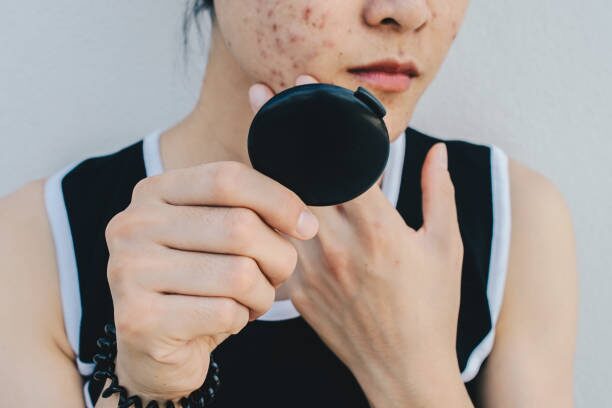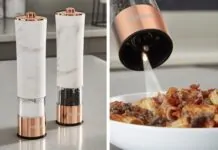
Table of Contents
Visible light treatments are used to treat acne breakouts that are mild to severe. Both blue and red light therapy are forms of phototherapy.
Light therapy is a special treatment for acne lesions, particularly those produced by inflammation or bacteria. While there is no cure for acne, extensive evidence supports light therapy as an acne management technique.
Therefore, In this guideline, we’ll look at how light therapy can help with acne scars and also how these therapies work.
Can Light Therapy Help Remove Acne Scars?
Although numerous oral and topical therapies for acne symptoms are available, around 50 million people suffer from acne or the side effects of specific treatments.
For the last two decades, physicians have supported visible light devices to fight infection on the skin as an alternative acne treatment.
Light therapy — sometimes even known as blue light, red light, or phototherapy — is a well-researched, generally safe treatment with very few side effects.
Light Therapy and its Benefits
In clinical treatment, visible light therapy is categorized into two types: blue light and red light. Each has a particular function and, they both contribute to the treatment of acne.
Blue Light Therapy
Blue light therapy is the most often applied therapy to treat acne lesions.
Blue light’s wavelength has an antibacterial impact, which makes it effective at killing various germs that can accumulate in your oil glands and pores, resulting in triggering acne breakouts.
In one study, people with acne received blue light treatment for around five weeks, seeing drastic improvement in their acne breakouts.
Moreover, blue light therapy helps tone your skin by removing free radicals that oxidize and age your face.
Furthermore, the treatment is anti-inflammatory, which helps relieve other acne symptoms like skin redness.
Red Light Therapy
Although red light therapy lacks antibacterial effects like blue light therapy, it can still be very effective for your skin treatment.
Red light therapy promotes the healing process and may even help to reduce the visibility of acne scars. It also has anti-inflammatory properties that resist bacteria from further breakouts.
The red light treatment penetrates deep beneath the surface of the skin, contributing to the relaxing and regeneration of your issue.
Therefore, If a severe skin condition causes your acne, you may benefit from red light therapy.
What are You Supposed to Expect During These Light Therapies?
You will first consult a dermatologist before you start with your phototherapy sessions. This is how they’ll be able to inform you whether you are suitable enough to take this therapy or not.
Moreover, they’ll even tell you all the details regarding the therapy and what you might experience before and after these sessions.
You may even be suggested to avoid retinol and any other skincare products for two weeks before your light therapy session.
Even make sure to share with your dermatologist if you are currently taking any anti-inflammatory medications. During your treatment sessions, you might also be advised to avoid tanning beds and unprotected sun exposure.
Blue and red light treatments both usually take 15 to 30 minutes each. You’ll either be told to lie down or place your head in a specific device designed to keep your face steady during the session.
A skilled light therapy specialist — typically a nurse or dermatologist — will apply pulses from light therapy equipment in a circular pattern to various areas of your face.
However, you might feel a bit nervous during these sessions, but it’s pretty natural. Try to stay as calm and steady as possible so that the sessions are perfectly executed.
Your treated skin may appear a bit pink or red after these sessions. There might also be small peeling of the treated skin areas.
The skin may even be more sensitive after the sessions, and you might also need to postpone your skincare sessions for a few days.
In such cases, your dermatologists might address you to apply sunscreen daily and even use sunblock while your skin heals.
Moreover, it’s pretty unlike that you might require only a single therapy session. Usually, to start with, it takes around two to three sessions per week, and this can even continue for four to six weeks.
However, these treatments can cost roughly $50 per session and are not typically covered by most insurance plans.
Possible Light Therapy Risks
Since the light used in phototherapy is not UV, it poses no risk of skin damage or radiation exposure. However, this does not indicate that there are no hazards associated with this treatment.
If the treated region is not properly cared for, infection is a possibility. If you get pus, blisters, or fever during light therapy, immediately contact your healthcare professional.
Moreover, certain patients should also avoid light therapy. For instance, if you are taking antibiotics, or if you are particularly sensitive to sunlight or easily burnt, so in such cases, light therapy treatment for acne may not be the ideal option for you.
Most importantly, you must avoid this treatment if you are pregnant or suspected of being pregnant.
Bottom Line
Visible light therapy is effective in treating acne in a large number of patients.
It’s critical to have realistic expectations regarding the effectiveness of light treatment. While it may alleviate some of your symptoms, it is unlikely to disappear your blemishes and acne permanently.
Moreover, it’s recommended that you first try less expensive acne treatments before attempting light therapy, and it’s recommended that you consult your dermatologist to determine if you qualify for this kind of acne therapy session or not.
















